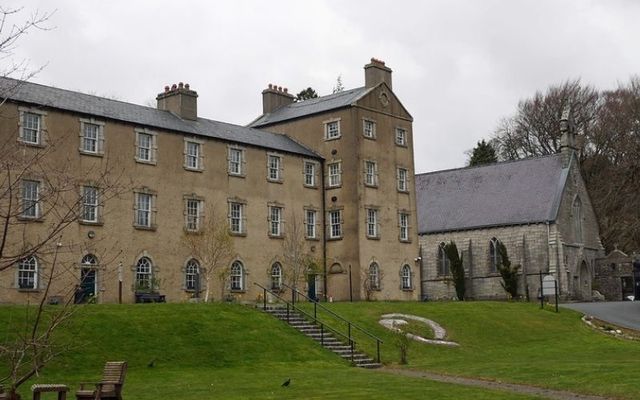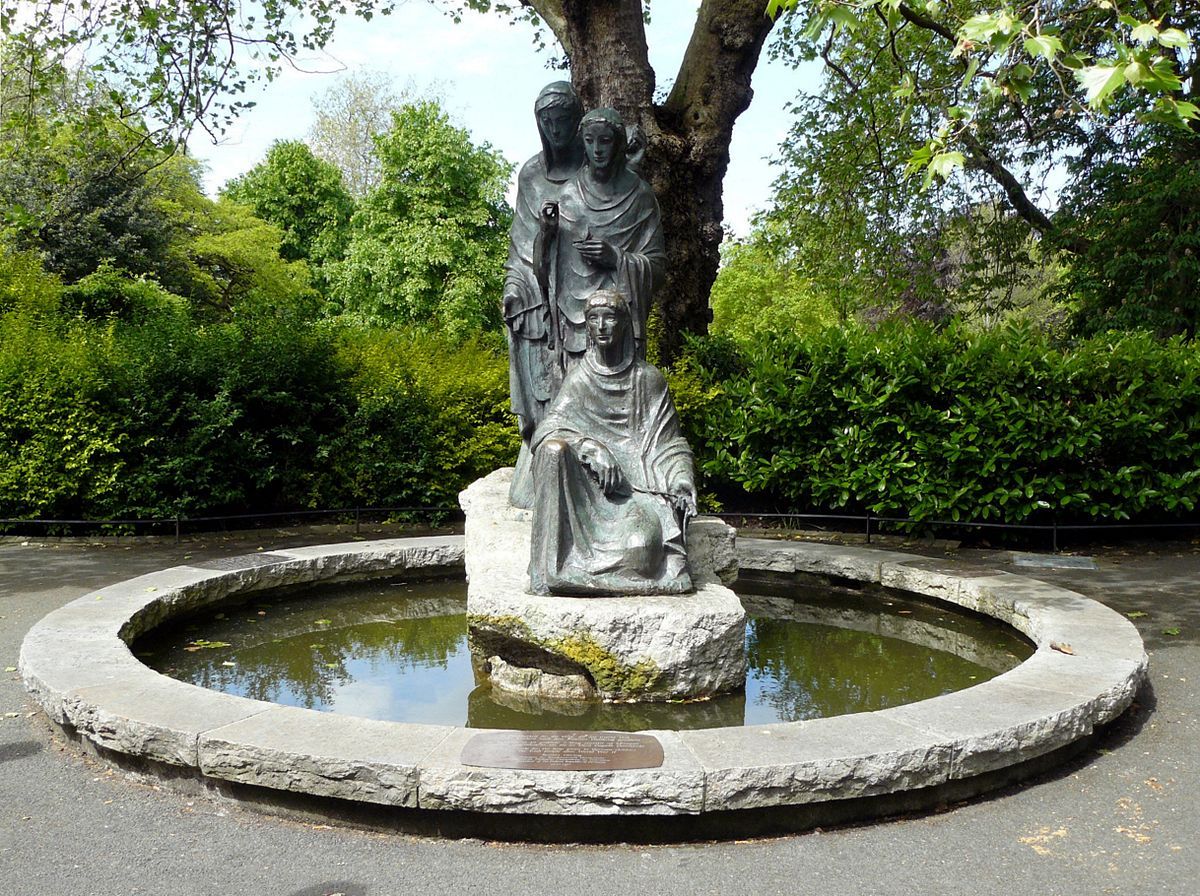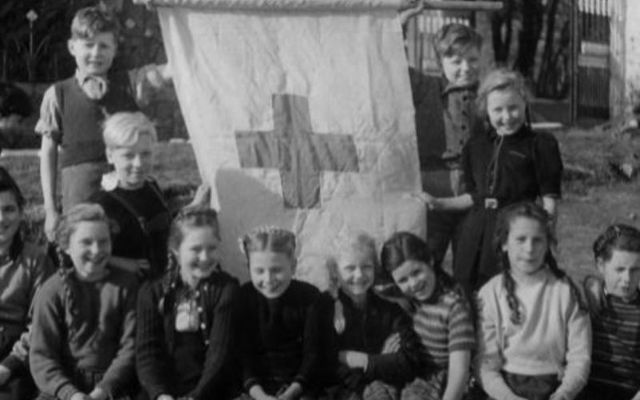In July 1946, dozens of German children stepped off a passenger ferry at Dun Laoighaire Pier, kickstarting a proud period in Irish history that is often overlooked.
The children were the first German refugees to arrive in Ireland after the Second World War during a campaign known as Operation Shamrock that would span half a decade and ensure that hundreds of German children were able to flee the hardships of a country still reeling from the brutal impact of the war.
Several German cities were leveled during Allied bombing campaigns toward the tail end of the war, causing untold pain and suffering and leaving millions of civilians homeless, impoverished, or starving. Many parents were no longer able to care for their children and were instead forced to send them abroad to ensure their health and well-being.
As the winter of 1945 drew nearer, the threat of starvation and death in Germany became greater, prompting Dr. Kathleen Murphy to establish the Save the German Children Society (SGCS) in Dublin in October 1945. Dr. Murphy had seen hundreds of French and Polish children arrive in Ireland through the Irish Red Cross and hoped to save "as many German children as possible from death by starvation".
Dr. Murphy's efforts to bring German children to Ireland as refugees in the winter of 1945 were thwarted by pro-Nazi and anti-British individuals who infiltrated the SGCS and gave the society a bad reputation among the Allied Forces in Europe.
Despite its bad reputation in Europe, more than 280 Irish families had offered to foster German children by December of the same year, but the British authorities in Germany refused to allow German refugees from traveling to Ireland if the SGCS was part of the plan.
The SGCS asked the Irish Red Cross to petition the Allied Forces on its behalf to combat this obstacle and the Red Cross eventually secured permission to transport German refugees to Ireland in July 1946 as part of Operation Shamrock.
On July 27, 1946, the first 88 Shamrock children arrived in Dun Laoighaire via passenger ferry. The Save the German Children Society was not aware of their arrival and did not participate in their transport, although it did regularly check up on children once they arrived at their foster homes.
The children were offered cocoa and buttered bread by Red Cross nurses when they stepped off the ship - a moment of bliss for children who endured unimaginable pain and hardship in wartorn Germany.
Tony O'Herlihy, an amateur historian who has conducted extensive research into Irish aid to Germany, said that the children were also offered oranges when they stepped onto Irish soil. However, they had never seen oranges before and mistook them for Irish apples, biting right through the skin.
After their first taste of Ireland, the children were taken to one of three centers. Some were taken to centers in Louth and Donegal, but most were taken to St. Kevin's Hostel in Glencree - a small village with a storied history in the heart of the Wicklow Mountains.

Foxtail_1/Flickr
Once home to a British Army barracks in the wake of the 1798 Rebellion, Glencree was later repurposed as a reformatory for Catholic boys shortly after the Irish Famine. Coincidentally, Glencree is now home to Ireland's German Military Cemetery, which contains the remains of 134 German soldiers and civilians who died on Irish soil during the First and Second World Wars. The Wicklow village is also home to peace and reconciliation that helps resolve conflict in Northern Ireland.
Children spent roughly six weeks to six months in Glencree where they enjoyed clean sheets, fresh butter, and walks in the beautiful countryside.
The Irish Red Cross used Glencree and the centers in Louth and Donegal to screen them for various diseases, including lice. Once they were given the all-clear, Irish families would travel to the centers and pick out a child to foster.
By April 2, 1947, 418 German children had arrived in Ireland as part of Operation Shamrock. The children, who were aged between seven and 12 and predominately came from the Ruhr Area in West Germany, were to stay in Ireland for three years before their return home.
Monica Brandis, an author who has interviewed more than 20 children who came to Ireland, said that children enjoyed different experiences depending on whether they were sent to the city or the countryside but said that the vast majority of children thoroughly enjoyed their time in Ireland.
"For the majority of children, it was a life-saving experience. They had lived through war, they were on the verge of starvation, they were sickly, they were traumatized. Most of them arrived in Irish families that really meant well," Brandis told IrishCentral.
Some children had less enjoyable experiences, especially those sent to rural areas, but Brandis said that a child's experience ultimately depended on their character.
"One German ended up in Mayo and he loved it there, but he said there was a level of poverty in Ireland that he hadn't even experienced in Cologne during the war.
"He loved it, he became almost Irish himself. He made the best out of the situation. He had never lived in the countryside and being in the bog with fresh air and good milk was paradise. Other people would have thought it was like slave labor."
Brandis estimates that at least 80% of the Shamrock children thoroughly enjoyed their time in Ireland, something that became apparent in 1949 when the first arrivals were due to return home.
Many children wanted to remain in Ireland with their foster families. Some of them had fallen in love with the country, while others had forgotten how to speak German. In some cases, their parents refused to take their children back as they simply could not afford to feed and care for them.
Operation Shamrock had clearly played a hugely significant humanitarian role in the lives of hundreds of German children who had been devastated by the perils of war and is a forgotten piece of Irish history that people should be proud of. However, the operation was tainted by its treatment of German Jewish children in the post-war period.
No Jewish children were initially brought to Ireland as part of Operation Shamrock for various reasons rooted in underlying anti-semitism.
Minister for Justice Gerald Boland, for example, said that there would be "riots on the streets of Dublin" if Jewish children were brought to Ireland. Others worried that Jewish children simply wouldn't feel comfortable living in a Catholic household.
"Nobody said it was anti-semitic, but it was clear that they weren't welcome," Brandis said.
The Irish Government eventually agreed to take 100 Jewish children as part of Operation Shamrock in 1949 with the caveat that they were housed in Clonyn Castle in County Westmeath and not allowed to be placed into foster care.
Furthermore, the children were not allowed to ramble and mix with the Irish community and were to stay in Ireland for one year rather than the three years that other German children spent during Operation Shamrock.
For Tony O'Herlihy, Irish attitudes toward Jewish children in the post-war period were "ludicrous".
"Why they would think that poor Jewish children who came from places like Belsen and Auschwitz would be a danger to Irish people, I have no idea. Maybe we had inane in-built antisemitism before we learned to have a little bit of humanity."
Having said that, the Irish efforts to help German children in the aftermath of the Second World War remain a source of great pride for a country that was economically weak at the time and Germany has never forgotten Ireland's helping hand.
"For us, it's really important in our relationship with Ireland. It's something that we hold very dearly," said German Ambassador to Ireland Deike Potzel.
"At the time, Ireland wasn't particularly wealthy, but they still helped out and supported these children."
Monica Brandis, meanwhile, believes that Operation Shamrock was the bedrock of Ireland's post-war relationship with Germany, which remains strong to this day.
"I think it's the foundation of the relationship between Ireland and Germany. Germany was very grateful for the aid, especially because Ireland was such a poor country itself," Brandis said.
Physical evidence of the bond between Ireland and Germany lies in St. Stephen's Green in Dublin City Center. In 1954, the German Gratitude Fund donated the Three Faites Fountain to the Irish people as a gesture of thanks for their help during Operation Shamrock. It remains in St. Stephen's Green to this day.

The Three Faites Fountain in Stephen's Green. Memorino/Wikimedia Commons
The generous display of kindness and humanity from the Irish people was also never forgotten by the children who benefitted from it.
In 1997, 160 Shamrock children traveled to Dublin for a special commemorative ceremony attended by German President Roman Herzog and Irish President Mary Robinson.
President Herzog placed a commemorative plaque at the fountain in Stephen's Green before leading a delegation to Glencree to visit the place where it all began for most Shamrock children.
In 2013, refugees from Germany, Poland, and France traveled to Glencree as part of "The Gathering" - an Irish Government scheme encouraging Irish diaspora to return home.
Clearly, Operation Shamrock has had a lasting impact on Irish-German relations and on the children who it saved from the devastation and poverty of post-war Germany. However, Irish people remain largely ignorant of one of the noblest humanitarian efforts the country has embarked upon.
* Originally published in 2021, updated in Jan 2024.




Comments